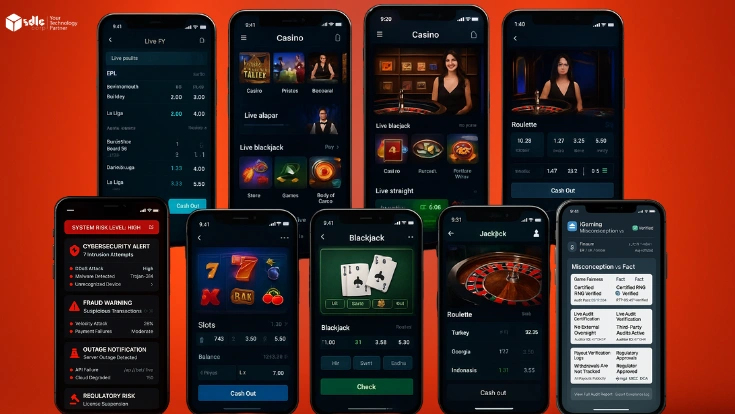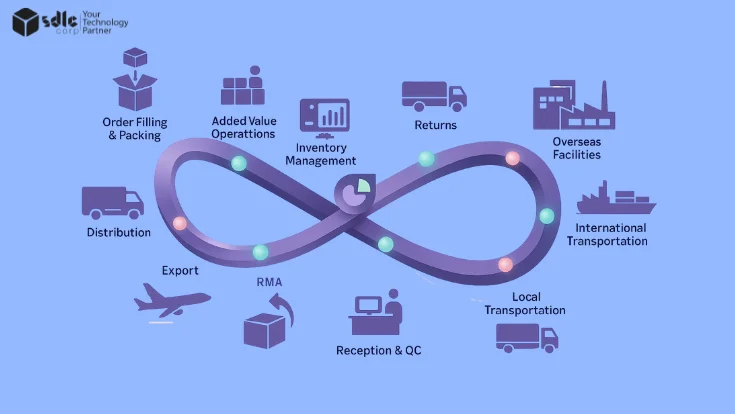Introduction
Fantasy games captivate players by immersing them in otherworldly realms, where they can wield magic, fight mythical creatures, or explore sprawling, enchanted landscapes. However, one of the most crucial factors that make these experiences so compelling is visual design. From the intricate details in character outfits to the majestic, larger-than-life environments, visual design in fantasy games plays a critical role in shaping how players perceive and engage with these fantastical worlds.
In this article, we will explore how fantasy game art, particularly its visual design, transforms the player experience. We’ll delve into the significance of visual storytelling, the role of character design, world-building, the use of colors and lighting, and how cutting-edge technologies like 3D modeling and animation, which are offered by any top game development company, contribute to creating immersive environments that resonate with players on an emotional level. Whether you are hiring a fantasy cricket game development company or working with a specialized Fantasy Football App development company, visual design is at the heart of creating compelling experiences.
Boost Your Fantasy Game Efficiency

The Power of Visual Storytelling in Fantasy Games
In the world of gaming, especially fantasy games, storytelling isn’t just conveyed through narrative arcs or dialogues; visuals play an equally important role in communicating the story. A game’s environment, art style, and character design can reveal critical backstory elements, foreshadow events, or even set the emotional tone of a scene.
Consider how the decayed ruins of an ancient kingdom or a foreboding, fog-shrouded forest instantly signal themes of mystery or loss. Designers, often supported by a game development service, use architecture, natural landscapes, and even minute object details to deepen the narrative. This aspect of visual storytelling allows players to interpret the world around them and immerse themselves in the lore, fostering a more intimate connection to the game.
Visual Design and Player Engagement
Fantasy games excel at making players feel part of something grand, and this is largely because of well-crafted visual design. Players don’t just want to hear about the kingdom’s history they want to see it for themselves. This engagement is where visual storytelling truly shines, transforming a simple quest into a visually rich, interactive adventure.
For example, when a player enters a forgotten temple in a fantasy game, the crumbling walls, faded murals, and scattered relics immediately communicate the site’s age and importance. Without a single word, the game conveys both the history of the place and its significance within the game’s larger world.
Heroes and Protagonists
The design of a protagonist can reflect their personality, skills, or backstory before the player even knows their name. Whether it’s a brave knight adorned in shining armor, a rogue with a dark cloak and a mischievous grin, or a powerful sorcerer draped in flowing robes, character design helps define who these figures are in the player’s mind. Many game development agencies specialize in creating such compelling designs that make characters more relatable and engaging.
Villains and Antagonists
Equally important is the visual design of the game’s antagonists. Villains often embody themes of chaos or evil, and their appearance can communicate their role as a threat to the player. From twisted creatures born of dark magic to sinister warlords, fantasy games use exaggerated, often monstrous visual designs to evoke fear or revulsion.
A memorable villain design can haunt players long after they’ve finished the game. The grotesque, ever-shifting appearance of a demonic overlord, for example, creates an instinctive reaction of unease, elevating the stakes of the gameplay.
World-Building Through Visual Design
One of the most profound ways visual design transforms the player experience is through world-building. Fantasy games are defined by their rich, imaginative environments, and it is the visual design that brings these environments to life. Every forest, castle, mountain range, or village contributes to the overall feel of the game and helps to define its unique world.
Environmental Art and Atmosphere
Creating immersive worlds requires attention to both the large-scale landscapes and the minute details within them. Designers craft environments that not only look visually stunning but also support the game’s story and gameplay. For example, fantasy cricket game development services or those focused on sports apps create interactive environments that appeal to a niche fanbase.
For instance, in an open-world fantasy game, players may find themselves wandering through vast fields, scaling snowy peaks, or delving into mysterious caves. Each of these environments needs to feel distinct and believable within the game’s fantasy setting. The textures, lighting, and sound design work in tandem to ensure that players feel as though they are truly exploring a magical realm.
Interactive Environments
Another key aspect of world-building is how the environment interacts with the player. Visual cues like glowing stones, ancient runes, or moving foliage often serve as indicators of gameplay mechanics or hidden areas. These subtle elements, carefully woven into the visual design, enhance the player’s experience by encouraging exploration and discovery.
Fantasy games thrive on a sense of mystery, and the visual design of these interactive elements plays a vital role in maintaining that intrigue. With specialized fantasy cricket game development agencies, even real-world sports fans can experience this immersion through fantasy apps.
Jump Into Action: Start Fantasy Game Project

The Role of Color and Lighting
When discussing the visual design of fantasy games, one cannot overlook the importance of color and lighting. These elements dramatically impact the mood, atmosphere, and emotional response of players.
Color Palettes
Different color schemes evoke different emotional reactions. A lush, green forest filled with life brings feelings of serenity and peace, while a red, blood-soaked battlefield conveys chaos and violence. In fantasy games, designers frequently use color to distinguish between realms of good and evil, peace and danger, or magic and mundanity.
Warm, golden hues might symbolize safety and hope, while cold, harsh blues could indicate danger or sorrow. These carefully chosen palettes help guide players’ emotions and keep them engaged with the game world. Even Fantasy Football App development companies emphasize the right color schemes in sports-related apps to boost user engagement.
Lighting Effects
Similarly, lighting plays a crucial role in building tension or setting the tone of a scene. The strategic use of shadows and highlights can evoke a range of moods, from ominous and foreboding to bright and hopeful.
Imagine walking through a dark dungeon, lit only by flickering torches casting long shadows on the walls. The limited visibility creates a sense of tension, as players feel vulnerable to unseen threats. On the flip side, stepping into a sunlit meadow with shafts of light breaking through the trees can instantly make players feel safe and at ease.
The Impact of 3D Modeling and Animation
With advances in technology, fantasy game art has reached new heights of realism and complexity. 3D modeling and animation techniques allow designers to create characters and environments that move, behave, and interact in incredibly lifelike ways.
Creating Realistic Characters
Modern 3D modeling tools enable designers to craft characters with intricate details from the texture of a dragon’s scales to the way a character’s hair moves in the wind. These small touches add depth to the player experience, making the characters feel more real and relatable. Whether you are developing a traditional fantasy game or specialized apps like those from Fantasy Baseball App development companies, realistic character design is crucial.
Dynamic Environments
Beyond characters, 3D modeling also plays a role in the creation of dynamic environments. Players can interact with objects, climb walls, break barriers, or even see the world change around them as a result of their actions. The visual fidelity achieved through advanced animation and rendering techniques creates a seamless, immersive world that responds to the player’s decisions.
Additionally, fantasy baseball app development services often use 3D environments to make their apps more engaging, giving fans the ability to experience real-world sports elements with a fantasy twist.

Conclusion
Visual design in fantasy games is more than just eye candy; it is a fundamental component of storytelling, world-building, and player engagement. From the detailed design of characters to the sprawling, atmospheric environments, the art of these games shapes how players interact with and experience their virtual worlds.
As technology continues to evolve, we can only imagine the new heights fantasy game art will reach, offering even more immersive and visually stunning experiences that draw players deeper into the magic of these fantastical realms. Whether through vibrant colors, intricate character models, or dynamic environments, visual design will always be at the heart of what makes fantasy games so captivating. If you’re looking to hire game developers to create such immersive experiences, selecting the right game development agency is essential to achieving this vision.

















